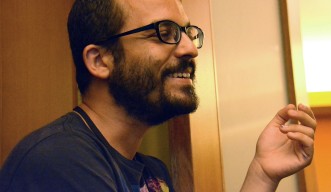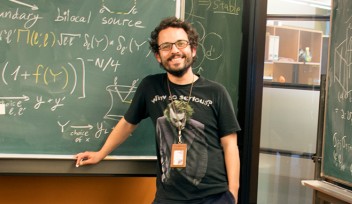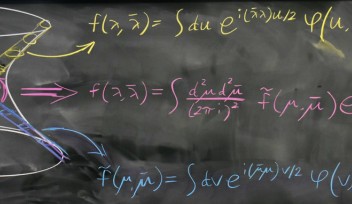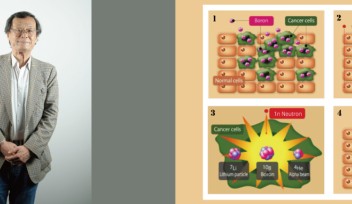At the Razor’s Edge: Yasha Neiman
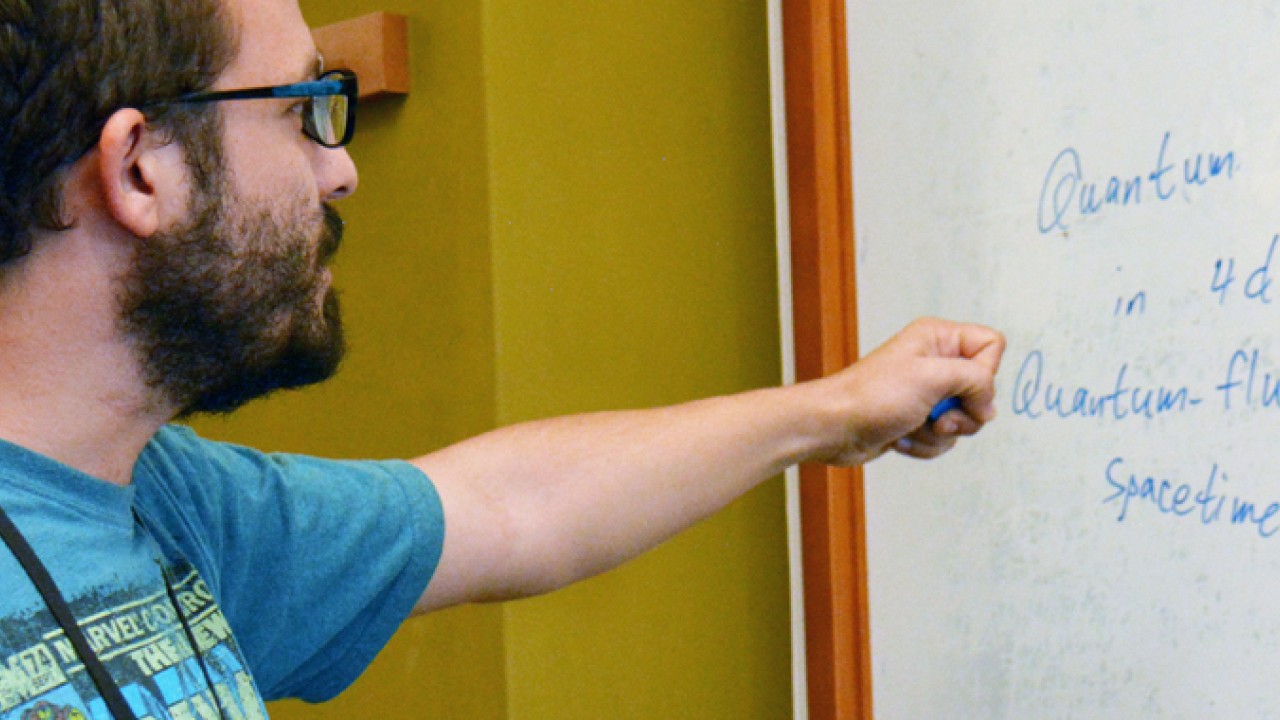
Do not enter Professor Yasha Neiman’s office unless you are prepared for a gripping, hour-long lecture on the nature of space and time. Afire with energy, the 31-year-old physicist tosses out complex theoretical concepts with the same casual air one might use to talk about the weather.
“So electricity, magnetism, and light turn out to be the same thing,” says Neiman in an amused tone. These, after all, are merely the basics.
He points the first-time visitor to his office to a thick tome on his shelf: ‘The Feynman Lectures on Physics, Volume III.’ All three volumes, according to Neiman, are essential reading for the uninitiated—and do not bother trying to understand physics without extensive labor. It is precisely this quality that draws Neiman to his calling; unlike other disciplines, many of which can be explained to a lay audience, theoretical physics requires a mastery of higher math, but beyond that, rigorous intellectual gymnastics, or as Neiman puts it, “training the human mind to think in ways that are not innately human.”
As head of the Quantum Gravity Unit at the Okinawa Institute of Science and Technology Graduate University (OIST), Neiman is tasked with building up a team that does not perform experiments. In contrast to many researchers, he has no costly gadgets—neither a physical laboratory nor complex machinery—apart from his mind.

Day by day, Neiman attacks one big question: How can quantum mechanics and general relativity function together in a constantly accelerating universe? Or, in other terms, how the smallest distance in the universe (10^-35 meters, or “Planck length”) can coexist with the largest (50 billion light years away, or a “cosmological horizon”). His work attempts to reconcile theory with reality, the infinite with the finite. It grapples with a world where “things are always at the razor’s edge of not working, but they work through some miraculous properties of the math.”
But if you ask Neiman, his first goal—for himself and his unit—is to have fun. So far, others seem to agree.
“Usually physicists are kind of sour-faced,” says Linqing Chen, a postdoctoral researcher who works with Neiman. “But he describes physics like you describe a fantasy world.”
Like Richard Feynman, of ‘The Feynman Lectures on Physics’ (1966) on Neiman’s bookshelf, who advocated the exploration of “concepts in various directions outside the main line of attack,” Neiman encourages the members of his unit to pursue avenues different from his own and meet frequently to discuss their ideas. Their work, he hopes, will yield answers, and inch closer to understanding what makes the universe tick.
As Neiman says: “No matter how difficult this question is, it must have an answer.”
Specialties
Research Unit
For press enquiries:
Press Inquiry Form










